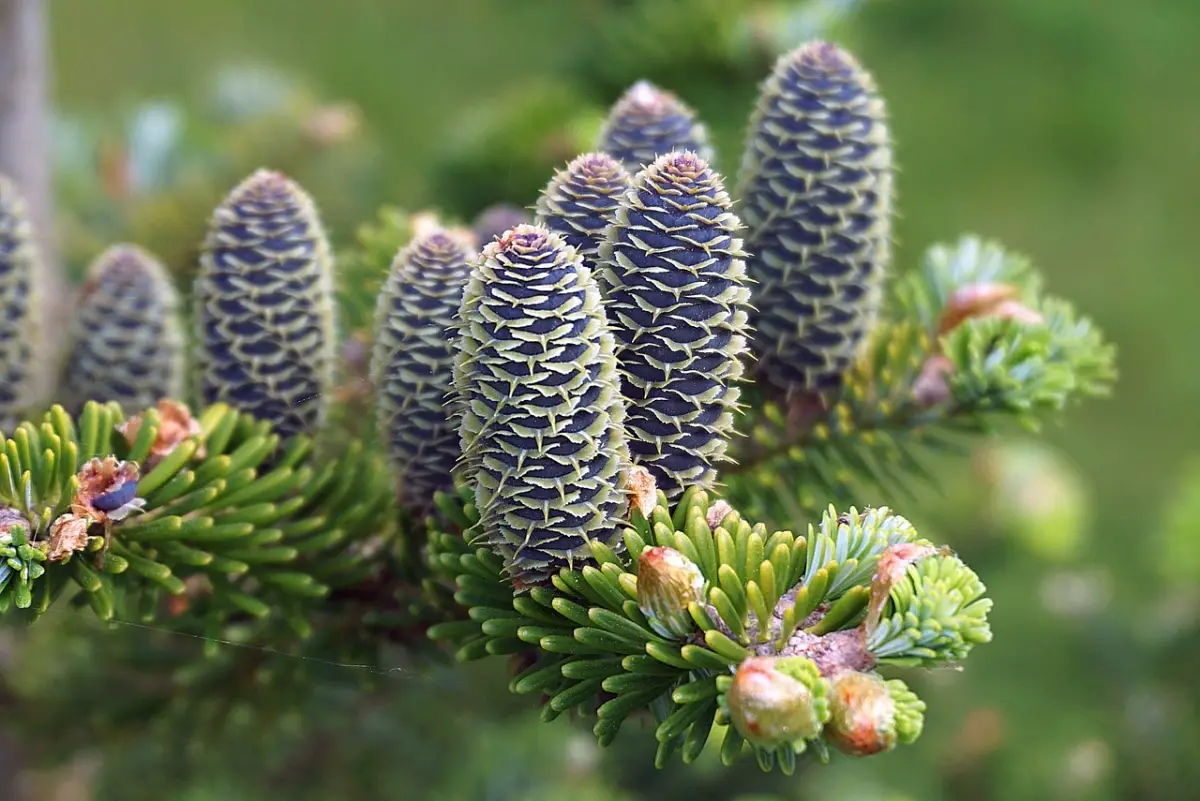
The fir tree is a conifer that is widely used as an indoor plant, but the truth is that it cannot live indoors: drafts from air conditioning or heating, lack of light, and the errors that are usually Committing to your crop, such as watering it more frequently than it needs or fertilizing it at a time when it is at rest, makes its life very short. But beware: when it is in the garden, its health can also be weakened.
And it is that pathogenic microorganisms, such as phytophthora for example, can cause many problems. That’s why, it is important to know the diseases of the fir tree and thus try to recover it.
Fir is a type of evergreen conifer found in temperate regions of the world. There are some, like the Korean fir (Korean Abies) which is so hardy that it is grown where the climate is generally mild in summer and very cold in winter. And it is that if there is something that all, or practically all, fir trees have in common, it is that They do not withstand extreme heat very well, much less drought.
But otherwise, We are talking about a plant that does not usually get sick. Of course that doesn’t mean he can’t do it; not in vain, he is still a living being and, as such, his state of health can weaken. But luckily, it is not the tree that has the most diseases. In any case, we want your fir tree to be healthy and precious for as long as possible, so let’s talk about the pathologies that can affect it:
Fused Fir Needle

Image – Andrej Kunca
This curious name is that of the disease caused by the fungus Rhabdoclina pseudotsugaewhich mainly affects trees of the genus Pseudotsuga and Tsuga, but also fir trees.
In these plants, what it does is cause leaf deathcausing the branches to dry from the tip to the back.
Transmission
If you detect symptoms in your plant, You must cut the affected part and seal the wound with healing paste. Likewise, you should treat it with a systemic fungicide such as this.
Coniferous browning
Virtually all conifers can be affected by the oomycete Phytopthora cinnamomi. Pines, cypresses, firs, yews… The causes are very varied.: too heavy soil, excess water, plants that were planted too close together, lack of nutrients, among others.

Related article:
Why do conifers turn brown?
When it manifests, we see that the leaves dry quickly as a result of root rot.
Transmission
Both to prevent and try to cure, fungicides should be applied against Phytophthora such as Aliette (for sale here) in spring and summer.
cytospore

Image – Joseph O’Brien
The Americans call it the spruce canker. It is caused by the fungus Leucostone kunzei which what it does is destroy the plant from the insidecausing the early death of the leaves, and the disfigurement of the trunk. Also, when a branch falls off, it leaves a resin stain.
It affects both fir trees (that is, trees of the Abies genus), as well as Picea and other trees, such as peach trees. However, it is difficult for them to get sick if they are provided with the necessary care and pruning is avoided (or in the event that it is done, care is taken to use proper and clean tools).
In fact, the most vulnerable specimens are those that are suffering from hydric stress due to lack or excess of water, those that have a root system that has not yet fully developed or pruning wounds that have not healed. Likewise, You should know that old fir trees have a higher risk of suffering from this disease.
Transmission
Regrettably, The most effective treatment is prevention.. It is necessary to try to plant the fir in a fertile and well-drained soil, where the climate is temperate, with mild temperatures in summer and low in winter. In addition, it must be borne in mind that it is better not to prune it: the fungi take advantage of these wounds to access the interior of the plants, and thus infect them.
In the event that it has to be done, it will be done at the end of winter with clean pruning tools and disinfected with water and dishwashing soap, and healing paste will be applied after each cut.
spruce heart rot

Image – Wikimedia / Jerzy Opioła
It is a pathogenic fungus whose scientific name is Phellinus hartigii which feeds on old trunks of fir, spruce and pine trees. When it becomes visible, it takes the form of a triangular hoof about 20 centimeters wide by 25 centimeters high.which is usually covered by lichens.
The symptoms can be confused with those of the natural aging of the treesuch as the progressive fall of the leaves, or slower growth. Now, if it is well cared for, it will prevent the plant from dying prematurely.
As you can see, there are few diseases that the fir can have. But, I insist, it is important to know the needs of the plant that we are going to buy, otherwise it will be very easy for it to get sick.
